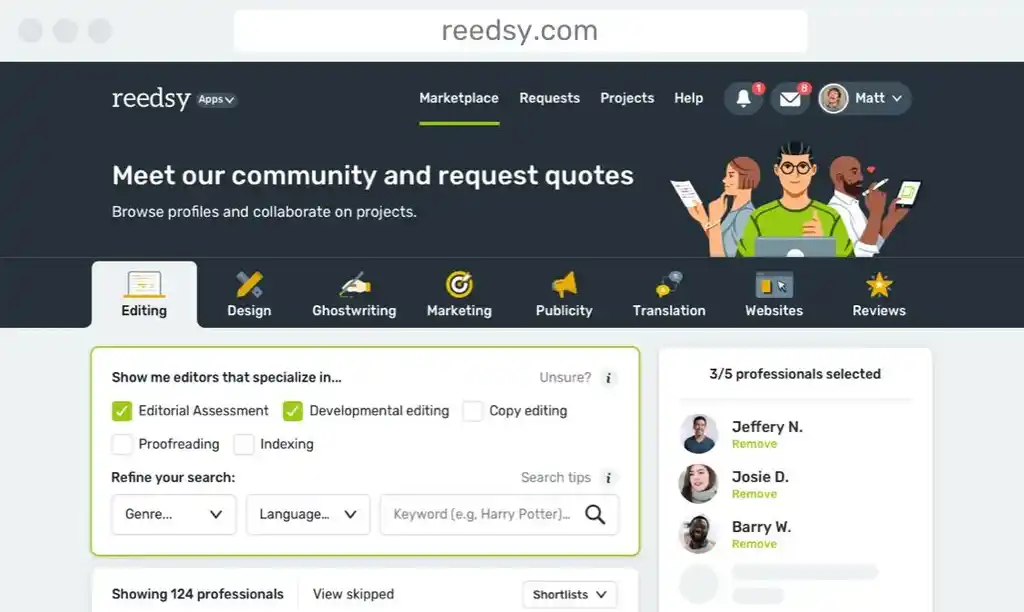In this presentation, Richard Stokes takes you through the process of adapting your novel into a screenplay. He breaks down how to extract the core elements from your story, identify its theme, and decide what to keep or cut. Richard also shares tips on how to get your screenplay noticed, from finding the right representation to entering script competitions.
This is a summary of Richard’s presentation on adapting novels into screenplays. To hear him go into more detail, you can use the time stamps featured below.
Distilling Your Novel for the Screen (07:34)
Adapting your novel into a screenplay means making tough choices about what to keep and what to leave out. Novels are generally much longer than screenplays, so the first step is to cut down the content while ensuring the heart of the story remains intact. A screenplay typically runs about 22,000 to 24,000 words, while a novel can range from 70,000 to over 200,000 words. This stark difference means you need to prioritize the elements that can be translated into a visual form. The key to a good adaptation isn’t just about shortening the story, but choosing the right moments that will have the same emotional impact on the audience.
One way to organize this is by creating a beat sheet. A beat sheet is a chronological list of the significant events from your novel that can be shown visually in a screenplay. Start by identifying scenes with physical actions, dialogue, and emotions that can be effectively represented on screen. Think about what you can actually see and hear: the characters’ faces, the settings, the weather, and the sounds. For example, an internal monologue may be powerful in a novel, but it won't translate well to a screenplay unless you find a way to show it — perhaps through the character’s actions, body language, or dialogue. Your beat sheet will help you focus on these visual and auditory elements, creating a skeletal structure for your screenplay.
While your manuscript might contain sections that are more internal or narrative-driven, those elements often don’t work well on screen without some form of visual expression. A long internal monologue or detailed description of a character's emotions may not be something that an audience can engage with in the same way as they would in a book. In these cases, you will need to find more dynamic, cinematic ways to present the same ideas. Consider what’s necessary for telling the story and what’s better left behind in favor of keeping the pacing strong and the visuals captivating.
Finding and Centering the Core Theme (14:44)
After you’ve mapped out the major events of your story with your beat sheet, the next step is to identify the core theme of your screenplay. The theme is the emotional glue that holds everything together. It should inform every creative decision you make, guiding you on which subplots to include and which to cut. The theme doesn’t have to be something explicitly stated in the film, but it should be a powerful, underlying force that connects all the elements of your story. For example, in Finding Neverland, screenwriter David McGee chose the theme of "What does it mean to grow up?" This theme shaped every decision, from the characters’ arcs to the subplots, even though it wasn’t directly broadcast to the audience.
You should make sure that the theme is something that resonates with you on an emotional level. If it affects you deeply, it is more likely to affect the audience in the same way. Themes like "man versus nature" in Jaws or "reconciliation with the father" in Field of Dreams help to ground the story and give it purpose. These themes shape the narrative, the characters’ journeys, and the obstacles they face. In an adaptation, understanding what your story is really about — the deeper emotional conflict or question — is key to ensuring the final script stays cohesive.
Once you’ve identified the theme, keep it visible throughout the writing process. Write it down on a post-it note and keep it near your workspace, so it remains a constant reminder. Every choice you make — from what to cut to how to portray a character’s journey — should reflect this theme. This helps keep the focus sharp and ensures that every element of the screenplay is working toward the same emotional core. The theme serves as your North Star, guiding your decisions about what to include, what to discard, and how to maintain emotional continuity throughout the story.
Navigating the Reality of Selling Your Script (26:37)
Once your screenplay is finished, the real work begins: getting it into the hands of the right people. However, you won’t be able to sell it directly to a production company or studio without representation. In the U.S., the standard process is to first secure a manager, someone who will work with you to refine your script and help build your portfolio. A manager’s role is to nurture your talent and prepare your work for the market. Once your script is polished and ready to go, the manager will help you find an agent who can take over the process of selling your script to studios or production companies. In the UK, agents handle both the nurturing and selling of the script, so you would go directly to them for both.
Finding an agent or manager requires some research. Start by identifying screenwriters whose work you admire, and find out which agents represent them. You can do this by looking up their representation online, either through sites like IMDb Pro or by browsing their personal or professional websites. Once you’ve identified the right people, send a polite email with a brief description of your script, requesting representation. Keep in mind that agents receive countless submissions, so don’t expect an immediate response. If you don’t hear back after 4 to 6 weeks, it’s appropriate to follow up with a polite inquiry.
Entering script competitions is another way to get noticed. Websites like Coverfly offer access to various competitions where your script can be read by industry professionals. A strong finish in a competition can help raise your profile and get your script in front of the right people. Additionally, platforms like the Blacklist allow you to upload your script for feedback. The feedback you receive can help improve your script, and a high score on the Blacklist can lead to industry attention. While not every screenplay gets made, remember that it can still serve as a valuable calling card. Even if your script isn’t turned into a film, it can open doors to other opportunities, such as writing gigs or new projects.





